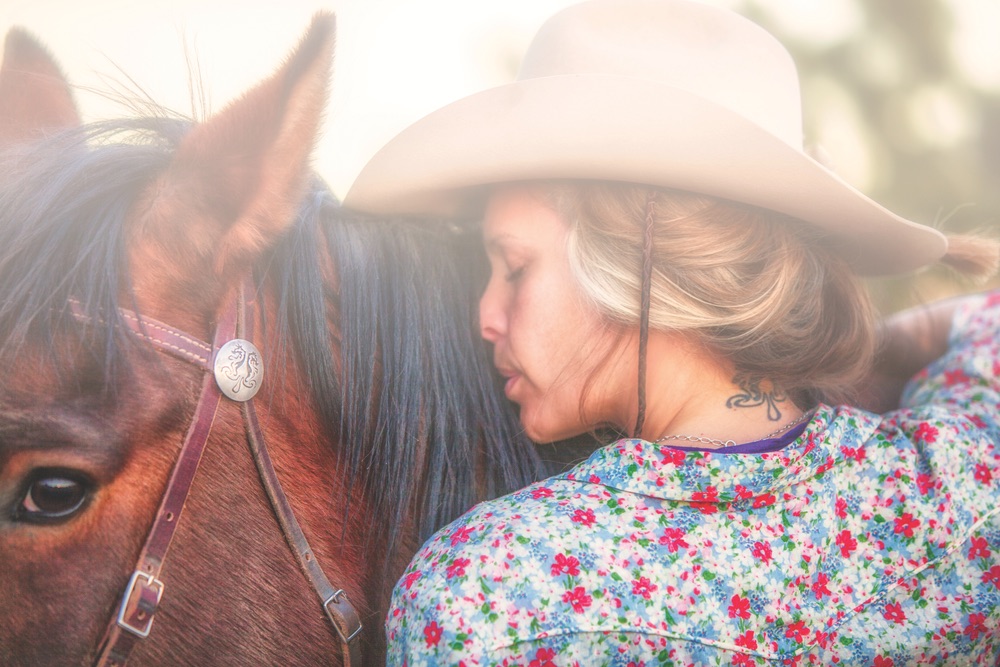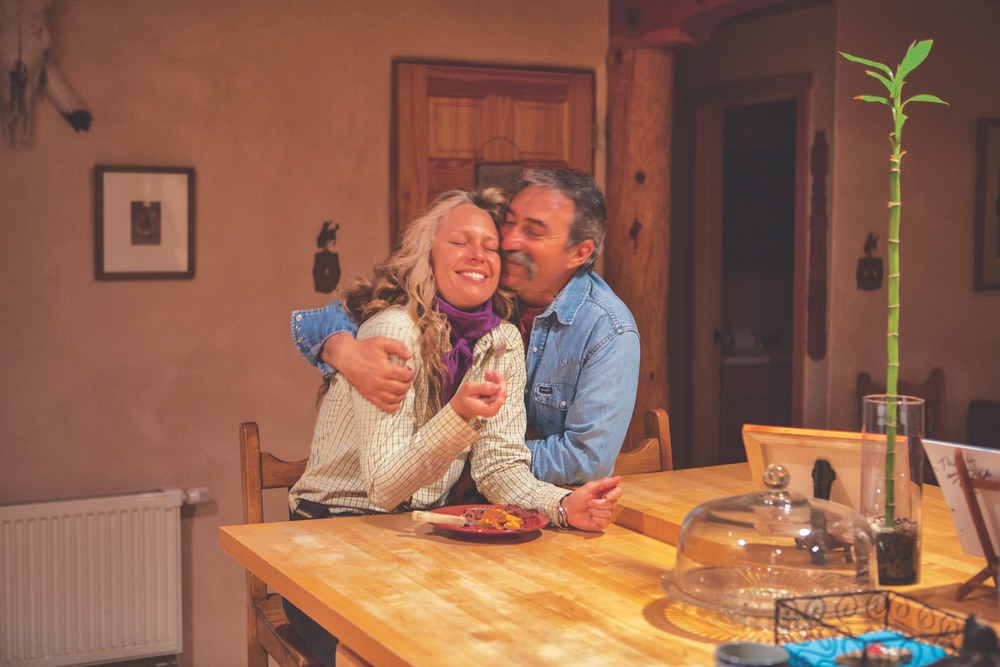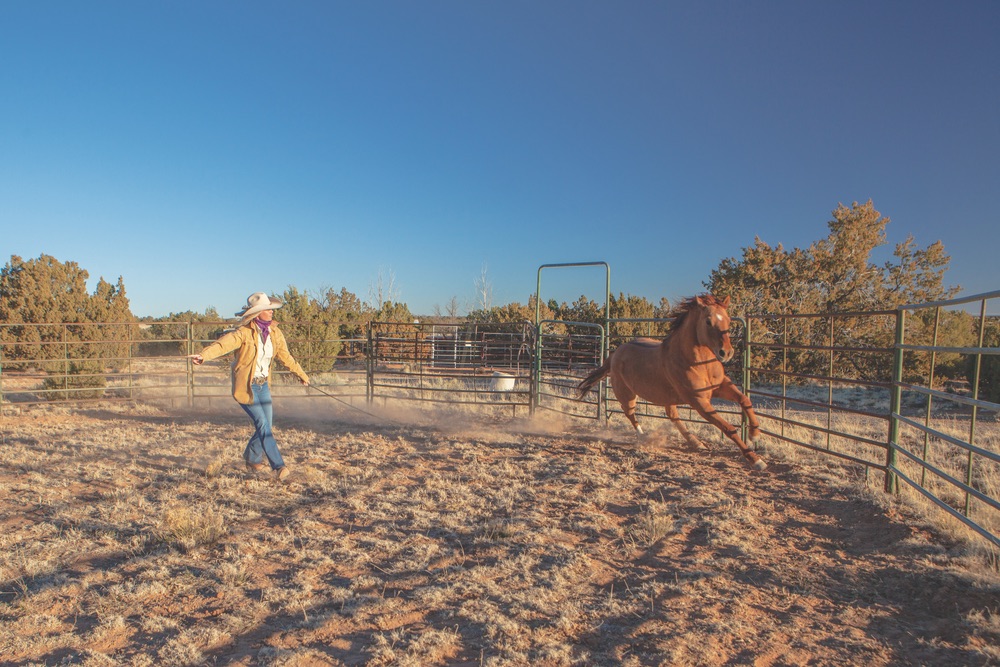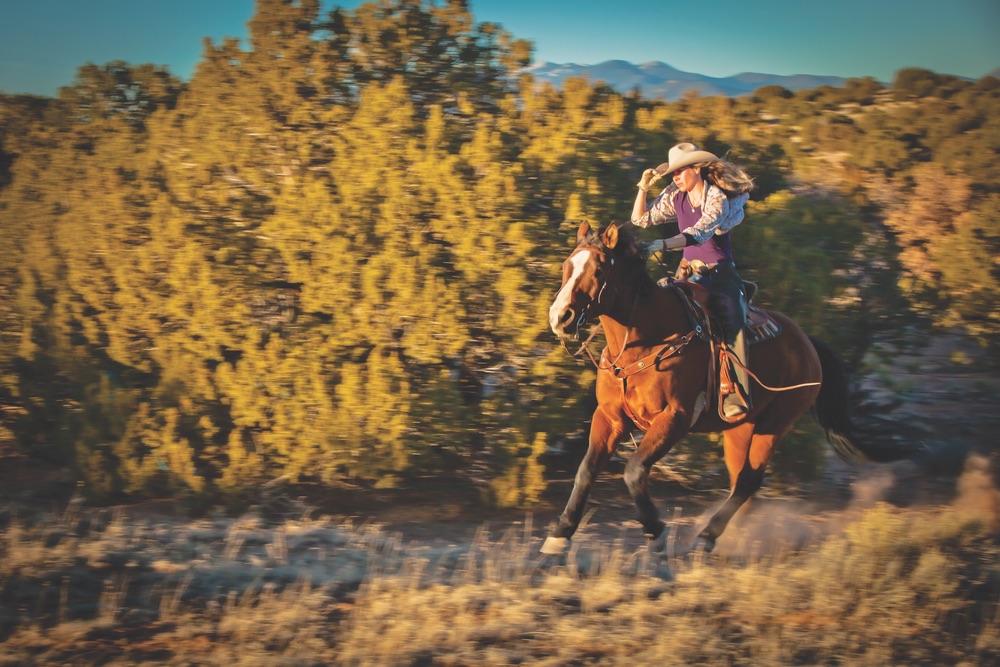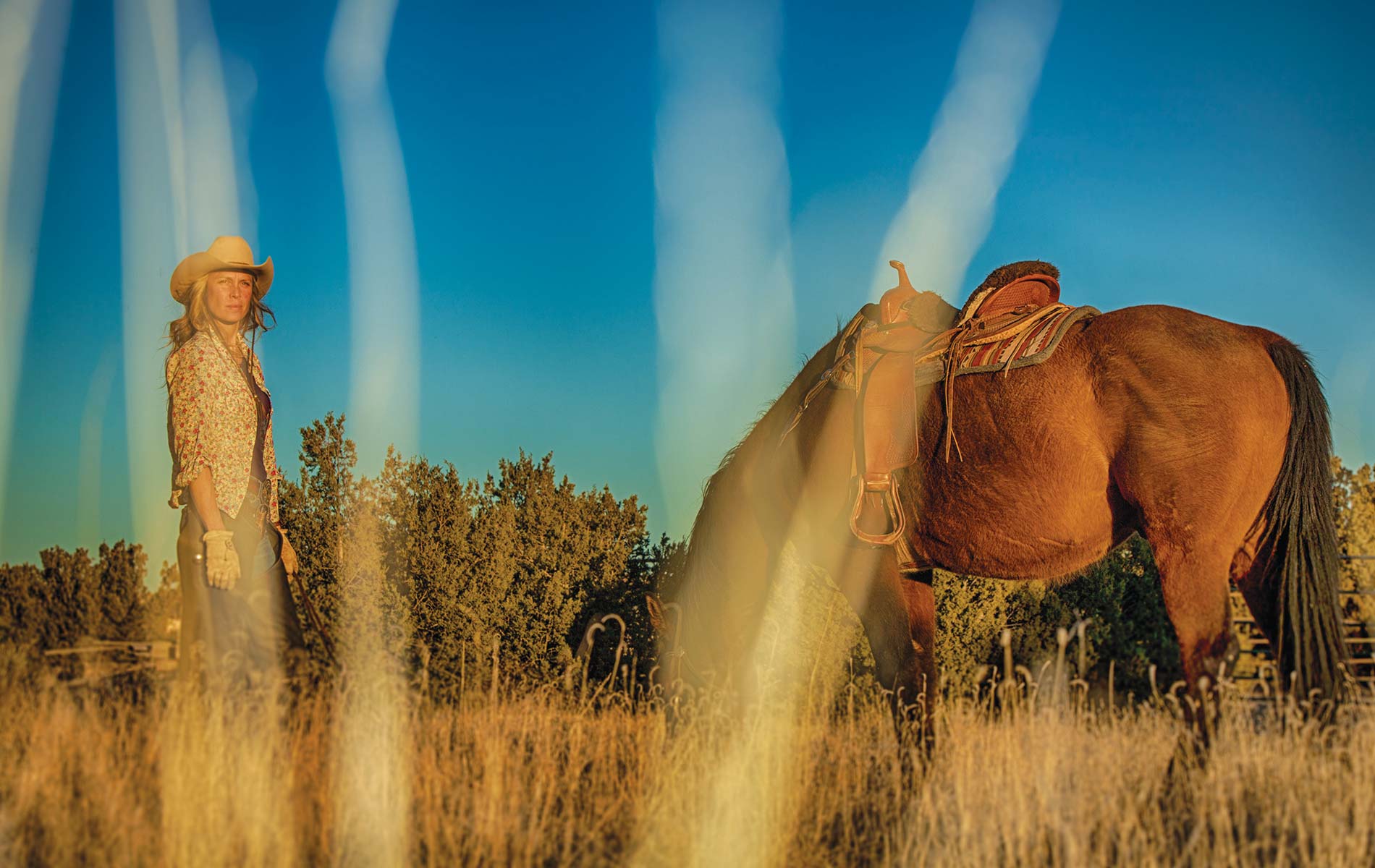
vie-magazine-year-of-the-horse-feature
The Year of the Horse
Any glimpse into the life of an animal quickens our own and makes it so much the larger and better in every way.
—John Muir
Story and photography by Romona Robbins
On the surface, the relationship we have with our pets is a simple one: we feed them, play with them, and love them. But when you really dig into the complexities of these interspecies connections, what you find can be quite enlightening. Would you be surprised to know that pets improve our health and boost our immunities? I guess it doesn’t surprise me that love makes us feel better, so it makes perfect sense—but I recently learned just how deep that healing love can go!
Let me start at the beginning: I’m not just a lifelong animal lover; I’m also a passionate photographer. This was confirmed when I won the 2011 Passionate Photographer Scholarship from Santa Fe Photographic Workshops (serious photographers everywhere are well aware of this institution). With more than a handful of programs to pick from, I chose to study documentary storytelling under Pulitzer Prize–winning photographer (and founder of Think Tank Photo) Deanne Fitzmaurice. I figured that if I was going to learn anything, then I might as well jump in with both feet.
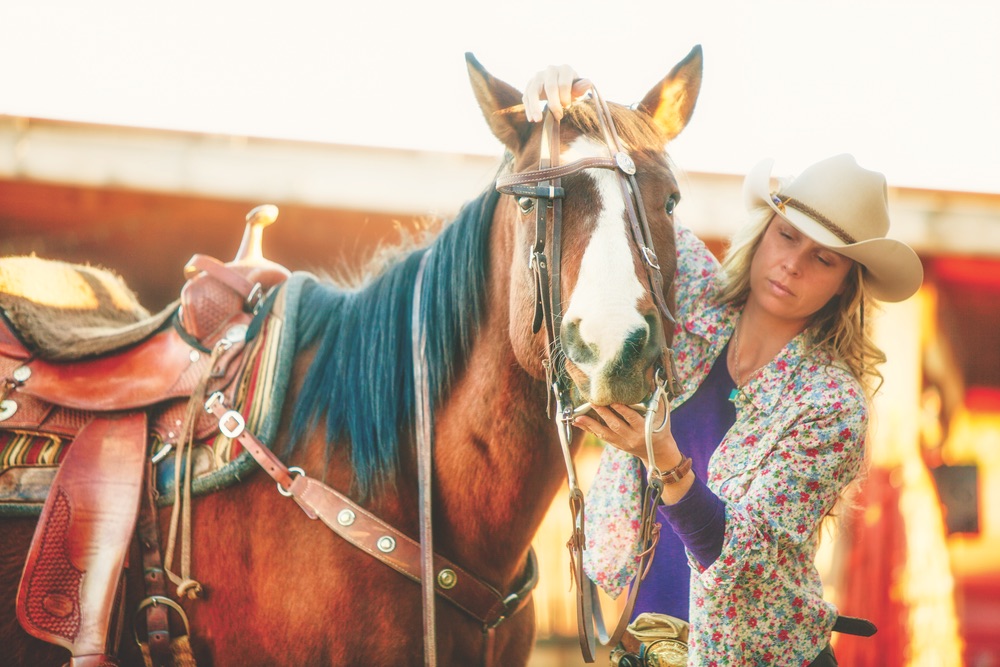
When it comes to documentary storytelling, the true challenge for me was inviting myself into someone else’s world and then nonintrusively capturing the soul of the story through my lens. But I knew Deanne would be there to help me through the process. The hardest obstacle up front was simply finding a subject. If you’ve lived in Florida for as long as I have, you tend to think of places like Santa Fe as the Wild West, so I thought, “Why not go the obvious route and research a topic that involves horses? I mean, I am an animal lover after all.”
Enter Horses for Heroes New Mexico – Cowboy Up! This is an organization that offers a skill-set restructuring program that helps rehabilitate wounded soldiers and veterans suffering from post-traumatic stress disorder (PTSD) and/or other combat injuries. It seemed like a well-defined and fairly prepackaged story that would produce some strong imagery.
But if you’re familiar with making documentaries of any kind, then you know that sometimes the best story is one you never expected to tell.
So, in the true cowboy spirit, I made my way to the Land of Enchantment. During the plane ride, with every state that passed beneath me, my emotions grew from excitement to fear: I knew this wasn’t going to be easy. I had the green light to shoot the horses and the heroes, but cold-calling the executive director, Rick Iannucci, and setting everything up through his loving wife, Nancy De Santis (who is also the director, the lead instructor, and a Reiki master), didn’t leave me feeling completely welcome. To be honest, her frankness scared the hell out of me—so much so that I even considered pursuing an alternate story line. After all, this was a spiritual journey for me, so why would I want to spend it with someone who didn’t come off as very friendly? But my gut was telling me to ignore the fear. It would make sense for Nancy to be protective of her clients and, of course, there are some boundaries that would need to be respected. Ultimately, if I was going to be successful in documentary storytelling, then I was going to have to get over my fear of intruding. I’m glad my gut can be logical sometimes.
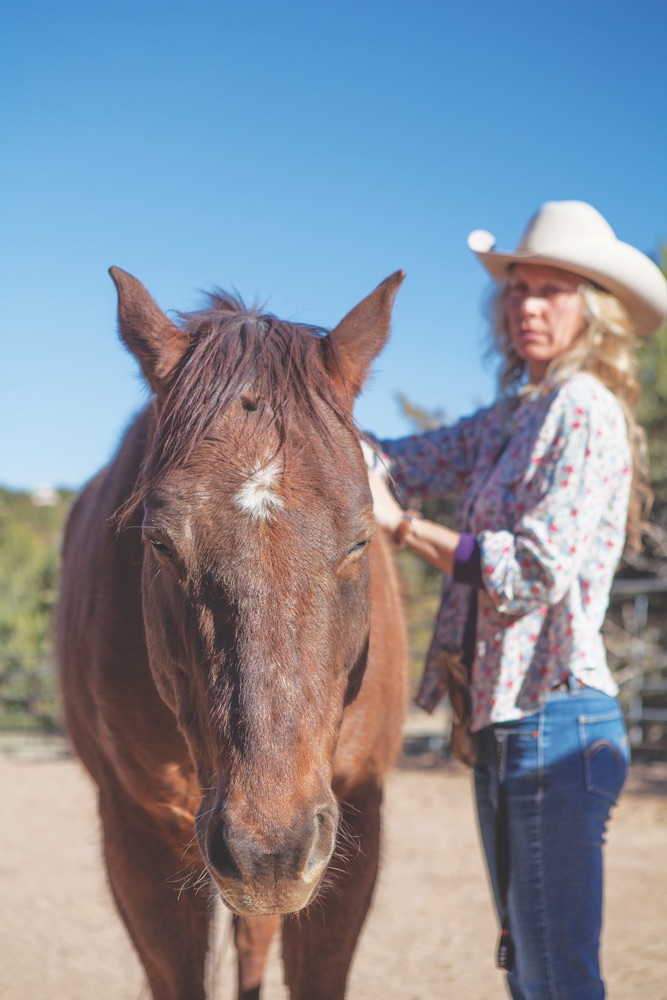
I’d love to say that I moseyed in at high noon, but I was running late (Thanks, GPS!). Besides, I don’t think you can call it moseying if you’re doing it timidly. But as I reached the entrance to the horse arena, the most beautiful cowgirl with the most radiant and welcoming energy that I have ever felt greeted me with open arms—it’s funny how reading into e-mail tones can give us such misguided impressions of people sometimes.
Day one was just observation. The worst thing a documentary photographer can do is break out the camera and start snapping away moments after meeting the subjects. It tends to depersonalize a very intimate situation. My focus was on the veterans and the horses, and there was an obvious aura of peace and tranquility that fed from one to the other, almost like a symbiotic relationship. The love and the trust they shared was an inspiring sight to see, but what really caught my eye was Nancy. She was like a medium who facilitated any significant communication between the horses and the heroes, and the challenge of somehow capturing that often unspoken energy through a lens became too powerful to ignore. And so it was that Nancy became my muse. My documentary would now tell the story of her relationship with the animals and how she trains them to be great healers.
The next several days were surreal. From the crack of dawn until dinnertime, I was Nancy De Santis’s shadow. I’m not sure why she let me in so easily after being so guarded in the beginning—perhaps it was the passion that we shared. I love what I do, and it’s obvious that she does too. Even her “mundane” managerial responsibilities and daily chores were carried out in a way that would inspire a generation. But the real magic came from her interactions with her family of horses. Whether it was during the client sessions or one-on-one, Nancy had a way with those horses that I thought only existed in old Westerns. She embodied the character well beyond the silver screen and didn’t even need a makeup artist to do it. Here was a smoking-hot cowgirl, a Reiki master, an anti-Stepford wife—a badass!
Before I go any further, I should explain the “master” part. Reiki is a form of energy healing that focuses on “spiritually guided life force energy.” It is believed that keeping our energy (qi) balanced will help maintain our physical, spiritual, and mental health. A Reiki master aids in channeling a client’s qi to flow evenly and uninterrupted throughout his or her body. This is accomplished when the practitioner’s hands are placed on or near the client’s body in a series of different positions.
OK, it sounds silly on paper but trust me, I’ve done it, and it’s an otherworldly experience. Based on my own personal experience, the best way I can describe Reiki is pure relaxation with an intense emotional purge. For those of you who might think that’s a little too new age for you, brace yourselves and open your minds—Nancy does this to her horses! I was fortunate enough to witness it.
First, Nancy placed her hand on the horse’s body, and without any prompting or cues, he closed his eyes and seemed immediately relaxed. Once the energy seemed to flow freely from where her hand rested, the horse moved his body to the next point right under her hand. His eyes were closed as he hung his head low.
What was even more amazing to me was that all the other horses began to crowd him, trying to nudge him out of the way. It seemed as though they were anxious to get their turns too. It blew my mind. Because I have had Reiki performed on me in the past, I felt like I could relate to what the horses were experiencing with her at that moment, and I knew that it was real. And at that moment, it all made sense. Humans are inherently sensitive and energetic beings, and so are horses. These horses spend a good portion of their lives soothing and releasing the unbalanced energy harbored by the brave souls of their riders—and Nancy spends a good portion of her time helping the energy centers of her horses get back in balance. This is where I believe the actual healing process begins in regard to using horses as healers for the soldiers. It begins with Nancy’s relationship with her animals.
The caring compassion we give to our animal friends is reciprocated, and trust and love become unconditional. It’s no wonder that the pureness of an animal’s soul can be so good for us.
— V —
Share This Story!
KEEP UP WITH THE LATEST STORIES FROM VIE



